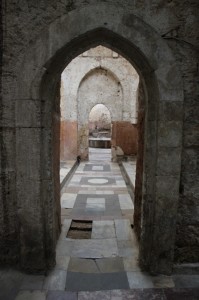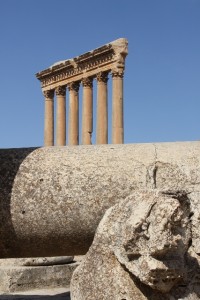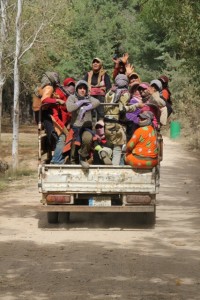Five entries on a trip to Lebanon in September 2011, traveling around the country, examining the country’s ancient to recent history and speculating on whatever all this means for present-day Lebanon.
(1) Beirut Today: A walk around the neighbourhoods of Beirut, past its cathedrals and its mosques, still shows a lot of civil war damage, but also the results of the tasteful post-war rebuilding efforts. Yet, the modern project developer is perhaps even more a threat to Beirut’s historical architecture.
“Is it safe?”, is what everybody asked us when we told them we were going to Lebanon for a couple of weeks. I suppose for current generations Lebanon will forever be associated with war. There was the bloody civil war (1975 to 1991), pitching the multiple factions of this complex country against each other through ever varying alliances. Who hasn’t heard of the Druzes, or the Maronites, adventurous-sounding population groups who at some time or another teamed up with, or against, the Christians or the Muslims of this country, openly supported by Syrians, or by Israelis, and secretly by who-knows, who-knew-then?
(2) History of the Harbours: Past glory of the ancient Phoenician city states, precursor to Lebanon, can still be found in Roman, Byzantine, Ottoman and home-grown Lebanese relics in the harbours along the coast, and a little land-inwards in the remarkable Beit-ed-Din palace.
The Lebanese coast is full of small towns, fishing harbours mostly, with a long and rich history. This is where, as much as seven thousand years ago, the Phoenicians lived, in small city states, long before the dominant empires of the Mediterranean established themselves. A sea-faring people cut off from the interior by high mountains, they focused on trade, helped by the world-famous cedar trees that grew on the slopes of these same mountains, and that provided not only wood for ship building, but also a sought-after export product.
(3) To Tripoli: Lebanon’s second city, Tripoli, is a great place to explore, wandering through the old souk in the city centre or along the harbour of El Mina. To get there from Beirut, one crosses once again a couple of centuries history, with examples of coastal Roman and Ottoman architecture and Crusader castles.
In order to get anywhere north of Beirut, one first needs to cross the Narh al-Kalb, or what was known as the Lycus River, an almost insurmountable river crossing in ancient times. Or so suggest the multiple inscriptions in the rocks along the river, of conquerors who did manage to cross, from Nebuchadnezzar to Napoleon, from the Romans to the French, who as recently as 1941 commemorated the liberation of Lebanon and Syria with an inscription here. These days a six-lane motorway will make you almost miss this major tourist site.
(4) The Mountains and The Valley: Away from the coast one crosses Mount Lebanon, with the remains of its once famous cedar woods, into the Bekaa Valley, home of the spectacular Baalbek ruins from Roman times and the ancient Muslim city of Aanjar.
Mount Lebanon is the mountain range that divides Lebanon in an overcrowded Western coastal strip and an empty, Eastern fertile valley. But Western and Eastern does not only refer to the geographical sides of the mountain, it also defines a cultural split.
(5) Back to Beirut: The Bekaa Valley is also a major wine growing area, with nice wineries around the town of Zahle. In fact, we conclude that, despite its complexity, Lebanon has a lot to offer besides its wine, thanks to good taste and a certain tolerance that is not immediately obvious from its history.
Zahle, the main town in the Bekaa Valley, has something of a reputation for food. We had lunch at one of the terraces that, apparently, fill up in the summer, the weekend and at night, but were now almost empty, along a muddy stream that further down was terribly polluted again – bottles, plastic, whatever people casually throw away after casual consumption. On either side of lunch we did a wine tasting; this is, after all, the area where Lebanon’s well respected wine comes from.














